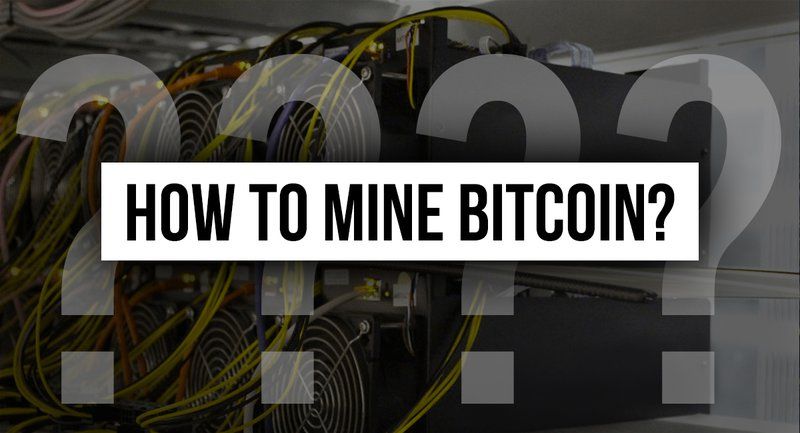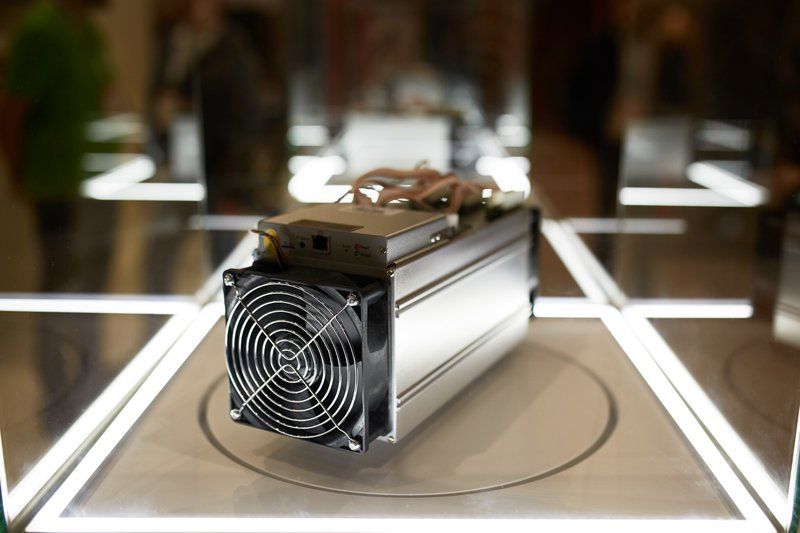
How To Mine Bitcoin?
The Bitcoin blockchain is dependent on dedicated computers around the world to help verify transactions on the network, and keep everything in working order. These computers are called “miners”, and these miners get rewarded for their work in Bitcoin. You’re not alone if you’re saying something to yourself like; “That sounds great, but, how do I even start Bitcoin Mining?”
You actually have a few options on how you’d like to start your Bitcoin mining venture, and they all have their pros and cons. At first glance, you might think you’d need a decent amount of technical knowledge to mine Bitcoin, but that’s not always the case. Anyone with a few minutes and a little effort can be online and mining Bitcoin within minutes. To get a crash course on how mining actually works, read [What Is Bitcoin Mining Actually Doing?].
The very first thing you'll want to make sure you have is a virtual “wallet” to store the Bitcoin you collect. Just like with mining, you've got a few different choices of how you'd like to store your coins. There are “offline” wallets that store your Bitcoin on your local computer, or online wallets that will hold your Bitcoin on a remote server. The most secure, however, would probably be a “hardware” wallet. These are essentially encrypted flash drives that allow you to keep your Bitcoin offline, and take them wherever you go.
Bitcoin Mining Hardware!
The most straightforward way of Bitcoin mining is to purchase a Bitcoin miner to lend your computing power to the network and earn your reward. In the cryptocurrency community, we call this connected hardware a “mining rig”. It used to be that one could mine Bitcoin with nothing more than an old CPU, but the rise in block difficulty has rendered CPUs, and even most graphics cards, obsolete. That’s not to say it’s impossible, but if you want to most bang for your buck, you’ll want to pull out the big guns, the ASIC miner. Click here to view the - [Best Bitcoin Mining Hardware of 2019?]!
These days, people use specialized pieces of equipment full of “application-specific integrated circuit”, or ASIC, chips. These tiny little chips have been specifically designed to be good at one task, finding the solution to an encryption algorithm, very efficiently. By solving the algorithm in question, also known as a hash, miners are verifying live transactions happening on Bitcoin's blockchain network and cementing them onto the public ledger.
When mining Bitcoin, you're looking to produce as much hash power as possible, while consuming as little electricity as possible. The margin is where you make your money back from the equipment purchase. To be profitable in today's market you need to run your Bitcoin miner with a power cost around $.06 USD/kW to break even on the Bitmain S9 Antminer which is pictured below. MiningStore is one of the few mining hosting providers that offers a rate even below this, making it profitable to mine in the bear market. So once you have your equipment, it's almost time to start crackin’ codes and mining some Bitcoin!

Getting Your Bitcoin Miner Running!
Before you can get mining, you'll need Bitcoin mining software to connect your miner to the blockchain. There are quite a few options out there, with the most widely used being BFGminer and CGminer. EasyMiner is another choice that offers a user-friendly interface to help anyone new to the mining game.
Even with the best bitcoin mining hardware, with a low total hash rate you'll find it difficult to find a solution to a given block, and receive the rewards for doing so. If you’re new to mining, you’ll likely find it very beneficial to join a Bitcoin mining “pool”. These mining pools are nothing more than a collection of people who use all of their miners together via the internet as a single source of computing power. If the pool solves the block algorithm, the Bitcoin reward is divided among those who lent power to the pool. This is the best way ensure you receive a steady flow of rewards for running your miner.
Want to learn about some of the best Bitcoin mining pools out there? Check out our blog post, [Bitcoin Mining Pools For 2019?], to get learn more.
Bitcoin Mining With Someone Else’s Hardware!
If all of that sound a little daunting, or you simply don’t have the time or space to manage your own mining rig, you could always rent power from someone else, and receive the Bitcoin produced from it! This is called Cloud Mining.
Basically, someone else sets up a large mining rig and allows people to rent out part of the computing power it generates, instead of using it to mine themselves. Everything gets managed for you. The only downside is that more often than not, when investing with Bitcoin cloud mining, you don’t own the hardware, and once your contract is up, your revenue comes to a halt. There's quite a large reseller market for used Bitcoin mining hardware which allows you to recoup some of your initial investment into the space.
To learn more about how cloud mining works, check out our blog post, [What Is Bitcoin Cloud Mining?].
See...Bitcoin Mining Is Easy!
With the right hardware and software, along with a Bitcoin wallet, you'll be collecting your first bit of coin in no time at all. From there, the sky’s the limit!
Newsletter!
Join our weekly newsletter for the freshest Cryptocurrency, Bitcoin Mining and Blockchain news!

 Miningstore is your turn-key cryptocurrency mining solution. We offer top-class hosting services, facilitate large-scale mining investments and can quickly source mining hardware of any type.
Miningstore is your turn-key cryptocurrency mining solution. We offer top-class hosting services, facilitate large-scale mining investments and can quickly source mining hardware of any type.